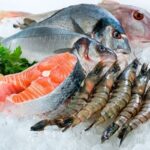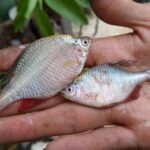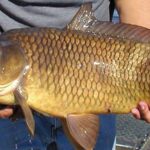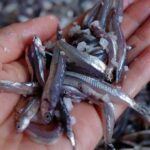Black Carp
Also known as Grass Carp, this fish has a long, round tubular body, pointed lips, and no barbels. It has a distinctive black back and a milky white belly. The meat of the black carp is white and firm, with large but sparse Y-bones. They typically weigh between 3-5kg.
White Carp
White carp, or grass carp, has a long, round tubular body with a rounded mouth and no barbels. Its back is a deep shade of black, while its body is a yellowish-brown color, and its belly is white-gray. The meat is soft and has few bones. White carp usually weigh between 1-3kg.
Common Carp
Common carp are of medium size, with a thick body, wide mouth, and large eyes set wide apart. They have two pairs of long barbels, a blunt snout, and a series of small fleshy warts around the mouth. Common carp typically weigh between 400g and 2kg.
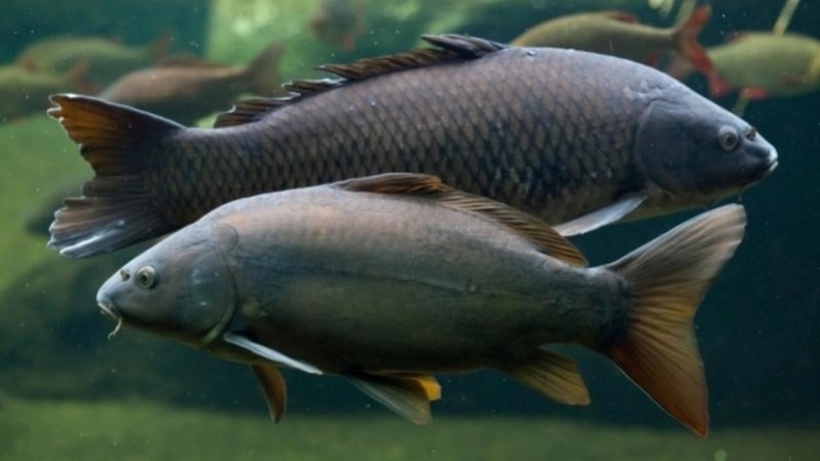
Common carp usually weigh between 400g and 2kg. Illustrative image
Mud Carp
The mud carp has a well-proportioned body that tapers towards the tail, with a moderately long and blunt head. Its dorsal profile is straight, without a knick, and its lower lip and jaw are separated by a cleft.
The top of its head is smooth, its nostrils are closer to the eyes than the mouth, and its gills are narrow and close to the gill slit. Mud carp typically weigh between 800g and 2kg.
Bighead Carp
Although a member of the cyprinidae family, the bighead carp has larger scales than other species. They are primarily found in the upper or middle layers of rivers in northern Vietnam.
When cooked, the meat of the bighead carp is soft, sweet, and aromatic. It is used in delicious dishes such as braised bighead carp and bighead carp steamed with beer…
Silver Carp
This fish, also a member of the cyprinidae family, has a flat body, small scales, and a large head with distinctive silver-colored scales.
Silver carp feed on organic detritus and zooplankton and are typically found in the rivers of Tien Giang, Can Tho, Vinh Long, and Ca Mau during the flood season.
Some regions have begun intensive farming of silver carp to meet market demand. A single silver carp typically weighs between 150-240g.
Grass Carp
Grass carp, a member of the cyprinidae family, inhabit the upper or middle layers of rivers, ponds, swamps, and other calm waters with weak currents. After one year of farming, they typically weigh between 500-700g.
They have large heads, flat and slender bodies, and small white scales. Their fins are strong, especially the two near the head, which are sharp enough to cut skin if not handled carefully.
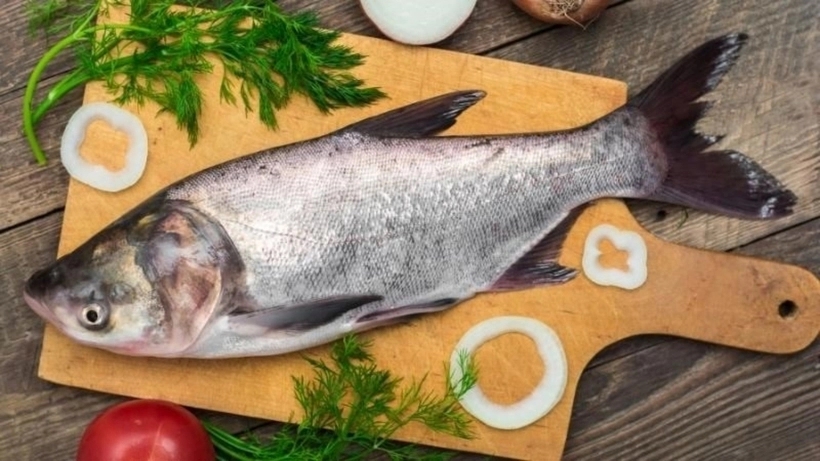
Grass carp inhabit the upper or middle layers of rivers, ponds, and swamps with weak currents. Illustrative image
Kèo Fish
Kèo fish (also known as bống kèo) are small, with a long, slender body that tapers towards the tail. Their mouth is blunt and faces downwards, with many teeth but no barbels. Their two dorsal fins are separate, while their pelvic fins are fused together.
Kèo fish are naturally farmed in coastal areas, tidal flats, and brackish water ponds in Ben Tre, Tra Vinh, and Tien Giang.
Pangasius
Pangasius is a member of the catfish family and can live in both freshwater and brackish water. Its body is thick and meaty, while its head is smaller in comparison, with a pair of long barbels on the upper jaw and a shorter pair on the chin.
Pangasius is commonly found in the Mekong River and is farmed in many regions of the Mekong Delta. Its meat is sweet, fatty, meaty, and has few bones.
Tilapia
Tilapia has a purplish hue and shiny scales, with 9-12 parallel dark stripes running from its back to its belly. Its caudal fin has dark stripes running from top to bottom and is spread across the entire fin.
Its dorsal fin has white stripes running parallel on a black-gray background, and its dorsal and caudal fin margins are light pink. Tilapia can grow up to 0.6m in length and weigh up to 4kg.
Rosy Barb
The rosy barb’s body is covered in reddish-pink or light yellow scales, with colorful dorsal and caudal fins. Its body is slightly oval-shaped and laterally compressed, with a short, wide mouth facing sideways.
Snakehead
Also known as chuối fish or quả fish, the snakehead has a thin and pointed head and is usually gray in color due to being farmed in ponds. It typically weighs 0.7kg or more.
Clown Knifefish
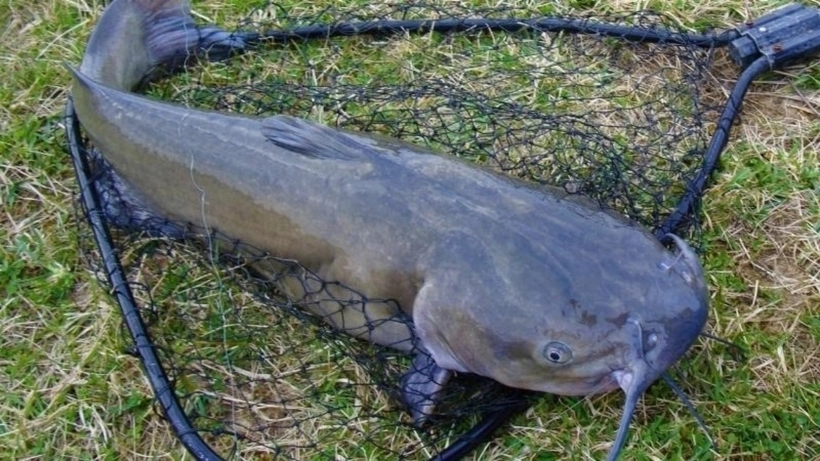
Clown knifefish have smooth skin, a flat head, and a slender, round body that tapers towards the tail. Illustrative image
There are five types of clown knifefish: đe, white, yellow, phi, and hybrid. They have four to six long barbels, typically measuring around 9.6cm in length. Their skin is smooth, with a flat head and a slender, round body that tapers towards the tail.
Asian Swamp Eel
This eel has a long body (around 400mm), a small tail, and small scales covering its entire body. Its mouth is large and short, and it typically weighs between 200-500g. The Asian swamp eel has a gray back and a silvery-white belly.
Loach
Resembling an eel, the loach is covered in slime. Its back is dark gray, fading to a lighter shade towards the belly.
According to Nguoiduatin
The Culinary Magic of Lemons
Sure, I can assist you with that.
“You probably already use lemons to make refreshing summer drinks, but did you know they have a multitude of other uses in the kitchen? From preventing fruit discoloration to cooking vegetables and even peeling eggs, lemons are a true culinary multi-tasker. You’ll be amazed at the versatility of this citrus fruit and how it can enhance your daily cooking.”
How to Distinguish Common Fish: A Guide to Identifying Carp, Crucian Carp, and Grass Carp for Home Cooks
Have you ever found yourself in a pickle, unable to tell the difference between carp, bighead carp, and silver carp? Well, worry not! We are here to help you master the art of distinguishing these three fish like a pro.


























